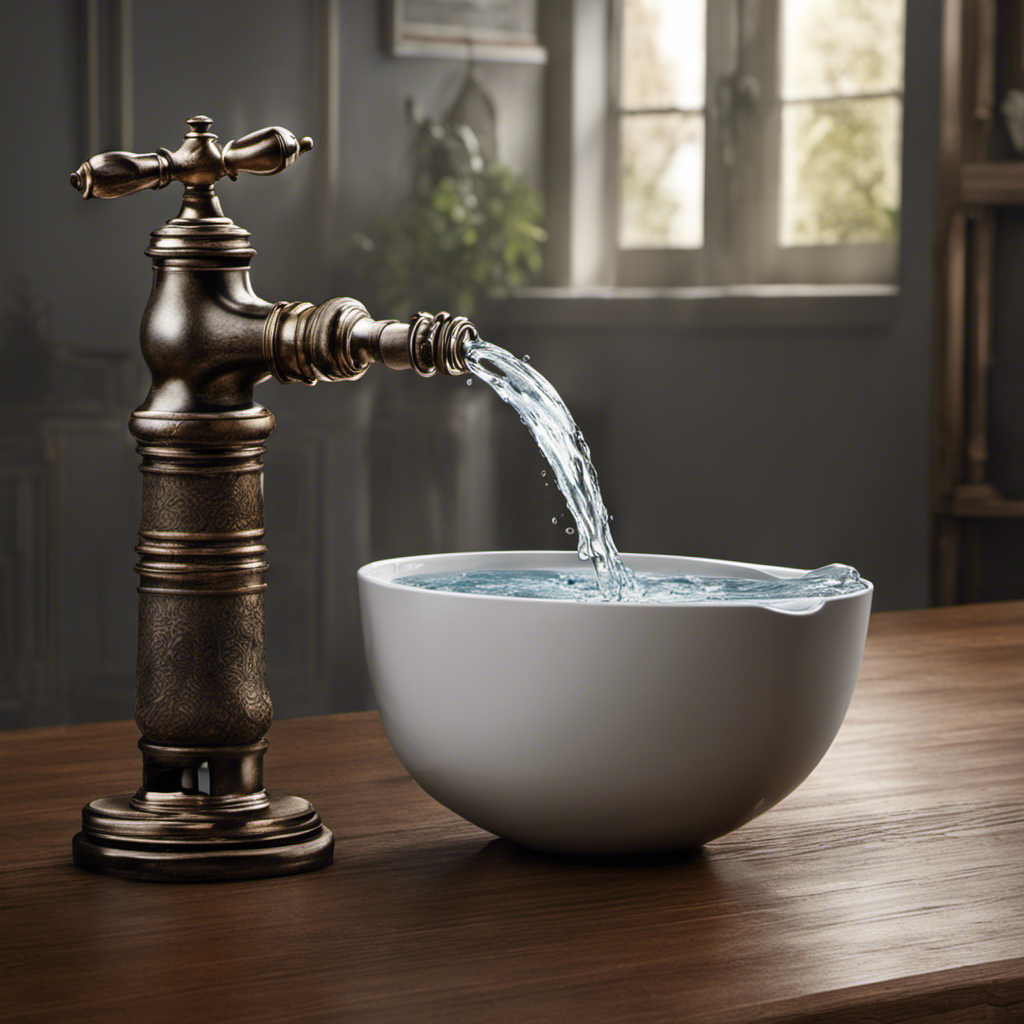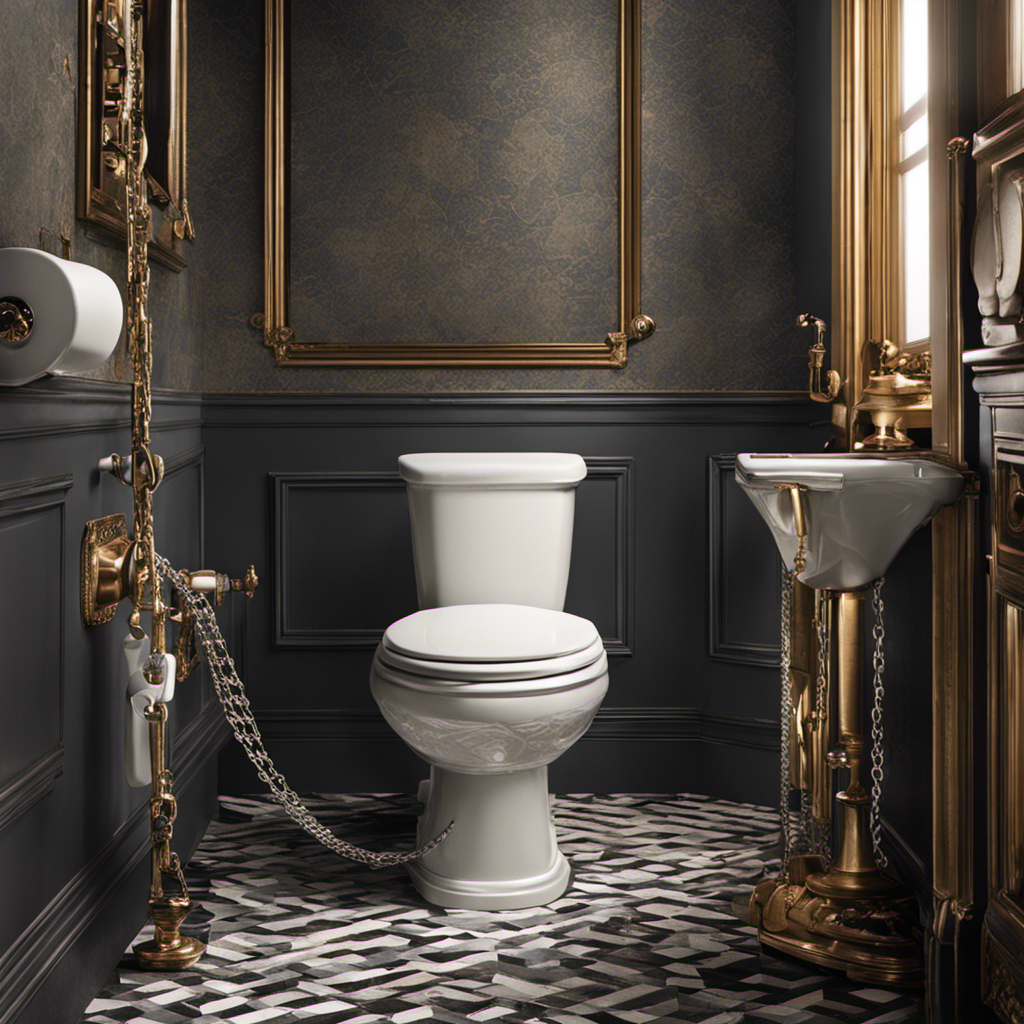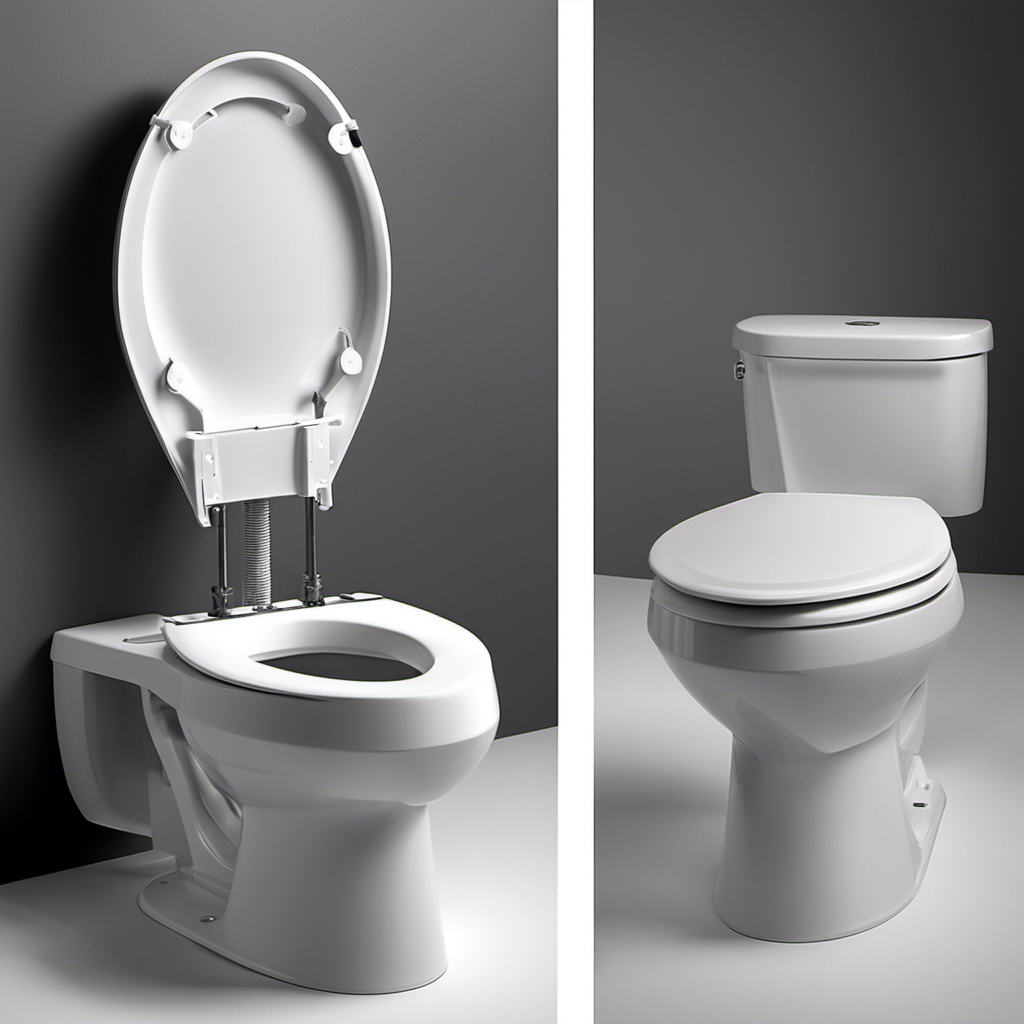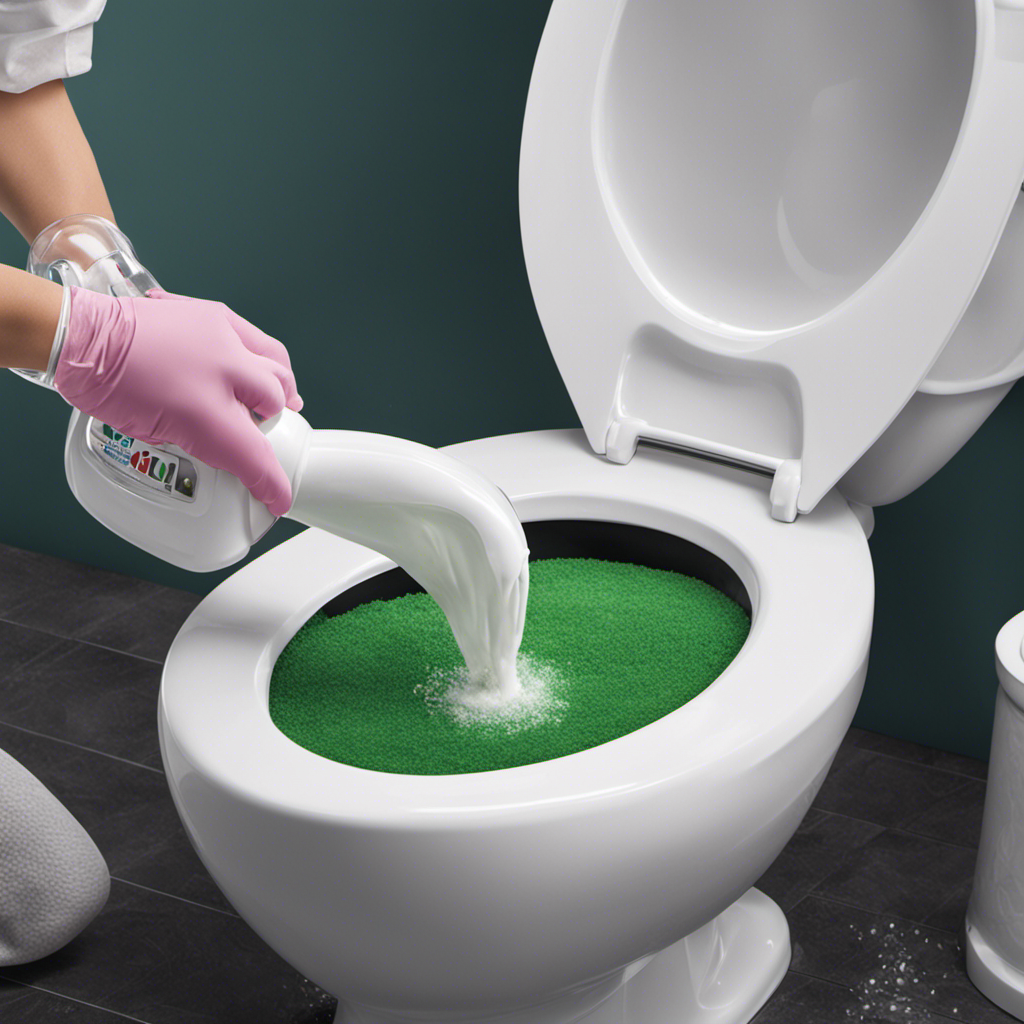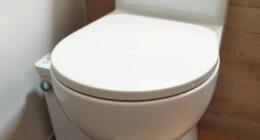I know it can be frustrating when the water is shut off and you need to use the toilet. But don’t worry, I’ve got you covered.
In this article, I will show you exactly how to flush your toilet when the water is shut off. With a few simple techniques and some basic supplies, you’ll be able to handle this situation with ease.
So let’s dive in and learn how to navigate this inconvenient scenario.
Key Takeaways
- Troubleshoot plumbing issues by checking for scheduled water outages and inspecting the main water valve.
- Have necessary tools and supplies ready, such as a bucket or container, a nearby water source, and flushing agent or disinfectant.
- Explore alternative water sources like rainwater harvesting or properly constructed and maintained wells.
- Implement manual flushing techniques, such as bucket flushing or creating a siphon effect, to conserve water and maintain toilet hygiene.
Understanding the Water Shut-off Situation
You need to understand why the water is shut off before figuring out how to flush the toilet without water. Understanding water scarcity and troubleshooting plumbing issues are key in this situation.
Water scarcity can occur due to various reasons such as maintenance work, pipe damage, or water main breaks. To troubleshoot plumbing issues, start by checking if there is a scheduled water outage in your area. If not, inspect the main water valve to ensure it is fully open. If the valve is closed or damaged, contact a plumber for assistance. Additionally, check if there are any leaks or blockages in the pipes that may be causing the water shut-off.
Gathering Necessary Tools and Supplies
Make sure you have all the necessary tools and supplies ready.
In emergency situations when the water is shut off, it is important to be prepared with alternative methods to flush the toilet. Here are three essential items you should have on hand:
- Bucket or container: This will be used to manually fill the toilet tank with water.
- Water source: Find a nearby water source, such as a bathtub or a large container filled with water.
- Flushing agent: In the absence of running water, you can use a disinfectant or bleach to maintain hygiene.
To flush the toilet using these improvised methods, pour water from the bucket into the toilet tank, ensuring it reaches the fill line. Then, add the flushing agent or disinfectant into the toilet bowl. Finally, use the toilet as you normally would, and manually flush by pouring the water from the container directly into the bowl.
Exploring Alternative Water Sources
Exploring alternative water sources can provide a backup solution during emergencies when the regular water supply is unavailable. One option is rainwater harvesting, which involves collecting and storing rainwater for later use. This can be done by installing a rainwater collection system that directs rainfall from rooftops into storage tanks or barrels.
It is important to ensure that the collection system is properly designed and maintained to prevent contamination and ensure water quality. Another option is using water from a well. Wells can provide a reliable source of water during emergencies, but it is crucial to have a well that is properly constructed, maintained, and tested for water quality.
Regular maintenance and testing are essential to ensure that the well water is safe for consumption and other uses.
Implementing Manual Flushing Techniques
Implementing manual flushing techniques can help conserve water in situations where the regular water supply is limited or unavailable. When facing such circumstances, it is crucial to maintain proper toilet hygiene while minimizing water usage. Here are some techniques to achieve this:
-
Bucket Flushing: Fill a bucket with water and pour it directly into the toilet bowl, allowing gravity to flush the waste away.
-
Siphoning: Use a hose or a flexible tube to create a siphon effect, drawing water from a nearby source and into the toilet bowl for flushing.
-
Portable Water Containers: Keep containers filled with water nearby, such as large jugs or bottles, that can be poured into the toilet bowl to initiate flushing.
By implementing these manual flushing techniques, you can effectively conserve water while ensuring toilet maintenance and cleanliness.
Water conservation is vital in times of limited or unavailable water supply, and these techniques can help achieve that goal.
Preventing Future Water Shut-off Issues
To ensure a continuous water supply, it’s important to regularly maintain and inspect the plumbing system. By doing so, we can prevent future water scarcity and ensure proper water usage.
Regular maintenance includes checking for leaks, repairing any damaged pipes or fixtures, and conducting routine inspections to identify potential issues before they become major problems.
Additionally, it is crucial to educate and promote responsible water usage among individuals and communities. This can be done through awareness campaigns, water-saving devices, and implementing water-efficient practices such as using low-flow fixtures and appliances.
Conserving water not only helps prevent future water scarcity but also reduces water bills and benefits the environment.
Conclusion
To conclude, when facing a water shut-off situation, it’s crucial to be prepared and equipped with the necessary tools and supplies.
Exploring alternative water sources, such as stored water or melted snow, can help in flushing the toilet manually. By implementing proper techniques, like pouring water directly into the bowl or using a bucket with forceful pouring, you can ensure a functional flush.
Remember to address any future water shut-off issues by checking for leaks and maintaining your plumbing system.
Stay prepared and keep the water flowing smoothly in your home.
